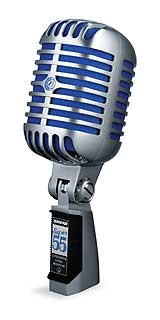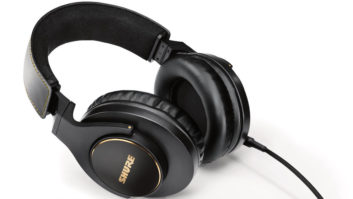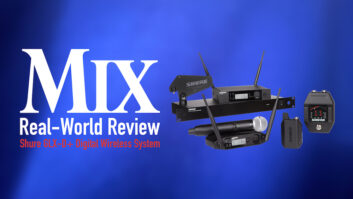
After more than 70 years in production, Shure’s (shure.com) Unidyne 55 Series is surely the longest-running product in audio history. The story begins in 1937 with Shure engineer Benjamin Bauer looking for a single-capsule approach to create a unidirectional microphone.
Experimenting with capsules having openings that allowed sound waves to reach the diaphragm, Bauer partially blocked the rear openings, yielding a short phase delay that cancelled the sounds from the rear, and the Unidyne was born. Debuting in 1939, the first Unidyne model 55 was an immediate hit and a standard for decades to come. With retro looks fully in vogue, Shure rechristened the mic as the 55SH Series II in 1996, bearing the model 55S body introduced in 1951, but with a modern SM48-style element. And like the 1939 version, the cardioid 55SH Series II was also a hit, showing up on stages, music videos, movies, TV shows—just about everywhere.
The latest generation is the Super 55, which keeps the cool chrome-plated, die-cast zinc body, but with such updates as a new capsule based on the successful Beta 58A, marking a substantial upward leap in performance.
The Super 55’s new supercardioid capsule works best with stage monitors placed slightly off to the side, with lobing at the 120-degree off-axis position rather than the straight-on cardioid approach. Also, the Super 55’s -53dBV/Pa sensitivity results in an output that’s approximately 5 dB hotter than that of the 55SH II, providing increased gain-before-feedback. As another plus, the frequency response extends out to 17 kHz, allowing for some extra air and articulation. At the other end, the Super 55’s bass response is smoother and seems more controlled, while retaining the 6 to 7kHz presence boost that lets vocals cut through the mix. Another appreciated change is omitting the on/off switch, which could inadvertently get switched off, leaving vocalists starting a show with no voice in the mix. The Super 55’s “no switch/no problem” approach definitely makes life easier for the audio engineer.
The Super 55 retails at $311 ($249 street), and the original $199 SH55 II remains in production. The company recently announced a Special Edition Super 55 ($299 retail) version with a striking black body and red windscreen—offered exclusively through Guitar Center. Sometimes, a classic just keeps getting better.







